Text
“The Ancient Origins of Ouija”
youtube
Join us for a crash course in the history of the Ouija Board.
0 notes
Text
“Prehistoric Irish Monuments Revealed As ‘Pathways for the Dead’”
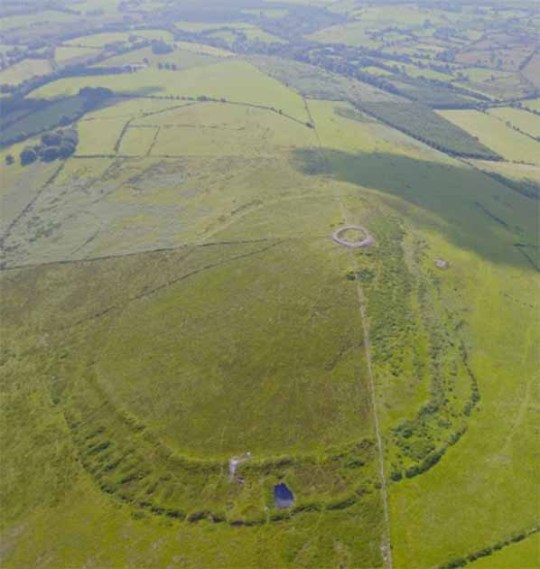
“Positioned strategically within the landscape, these monuments align with burial sites and the cyclical movements of the Sun, marking major solar events like the solstices. Dr. O'Driscoll interprets this alignment as symbolic of the journey of the dead, ascending to the heavens and marking a physical path from the world of the living to the ancestral beyond.”
9 notes
·
View notes
Text
“The side was steep, the bottom deep
Frae bank to bank the water pouring;
And the bonnie lass did quake for fear,
She heard the water-kelpie roaring.”
📖 “Folklore of Scottish Lochs and Springs” by James M MacKinlay (1893)
#folklore#scottish folklore#scottishfolklore#mythology#scottish mythology#fairy#fairies#fae#scotland#scottish#kelpie#kelpies#waterhorse
10 notes
·
View notes
Text

"Pixies dancing in a Ring by the Firelight" by William Bell Scott (1855)
3 notes
·
View notes
Text
New Chapter of Fading of the Veil is up!
This one is a bit short, which was preventing me from posting it, but instead hesitating, I just decided to go for it.
0 notes
Text
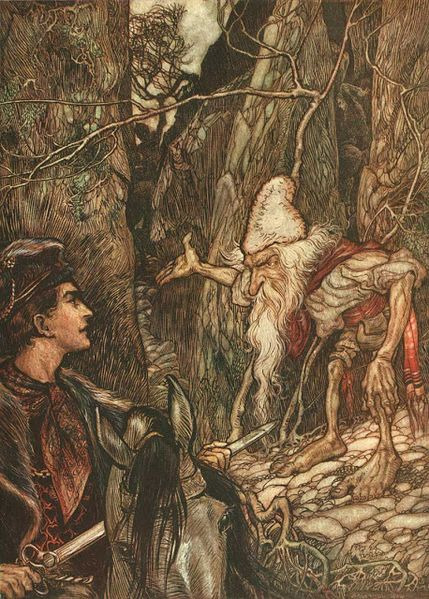
From Grimm's Fairy Tales - Illustrated by Arthur Rackham (1909)
8 notes
·
View notes
Text
New Scottish Folklore Statue

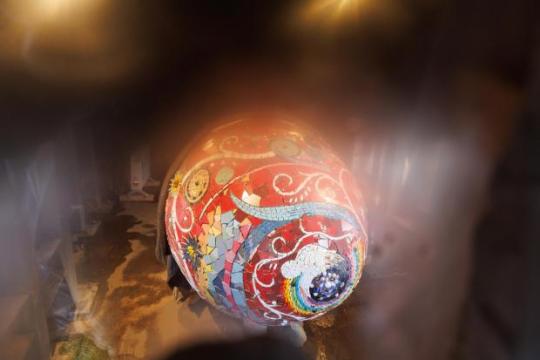
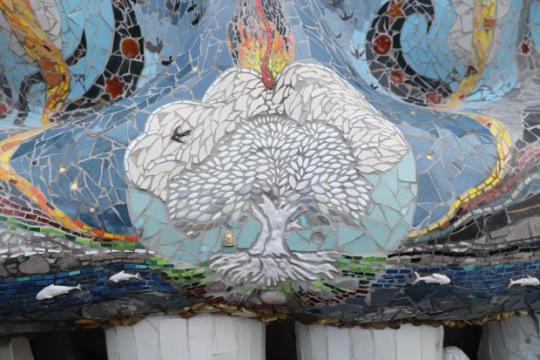
Image source and link with more info
This new Scottish folklore statue, “The Beithir” (AKA Bella) is gorgeous!
A Beithir is a great serpent that was said to love caves and had deadly venom. I have a post on it here if you'd like to learn more:
#beithir#serpent#scottish folklore#scottishm mythology#folklore#mythology#mythological creature#scottish#scotland#glasgow#FairyArt
9 notes
·
View notes
Note
I've been working at Tobar an Dualchais on a short-term basis and I want to say it's brilliant to see you using it as a source! I really love your blog - Scottish folklore gets overlooked so often.
<3
Thank you for your hard work on such a great project! Tobar an Duelchais is a goldmine of knowledge.
(For anyone reading this that needs a reminder: Tobar an Duelchais is an online archive of historical Scottish audio recordings; including about folklore! For example, here is one about a water horse)
I’m glad you like the blog!
9 notes
·
View notes
Text
“Tumblr users, here's what to know about Tumblr selling your data to OpenAI and MidJourney”
“To opt out of sharing your public Tumblr content with third parties, you'll need to toggle on a new "Prevent third-party sharing" option in the settings of each individual blog you run. This needs to be done on a web browser, not through the Tumblr app. These updates have been added to Tumblr's support article about user privacy.”
6 notes
·
View notes
Text
🐟Herring Girls

"Herring girls (or herring lasses) were groups of women who would travel the east coast of the United Kingdom from as far north as Aberdeen to as far south as Great Yarmouth, following herring as they migrated throughout the year."
— Girl Museum
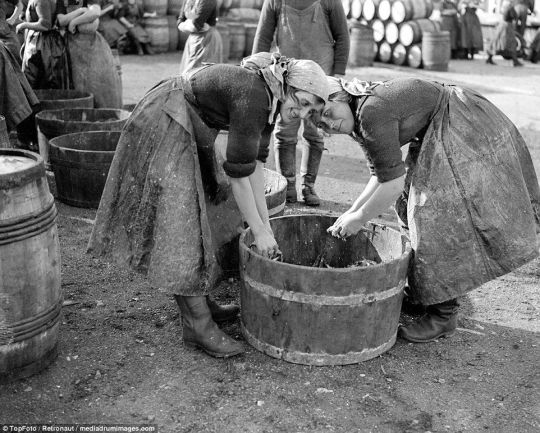

Typically, the women would work in small groups to gut, salt, and pack the fish into a barrel. They were paid by the barrel, so working fast was a must.
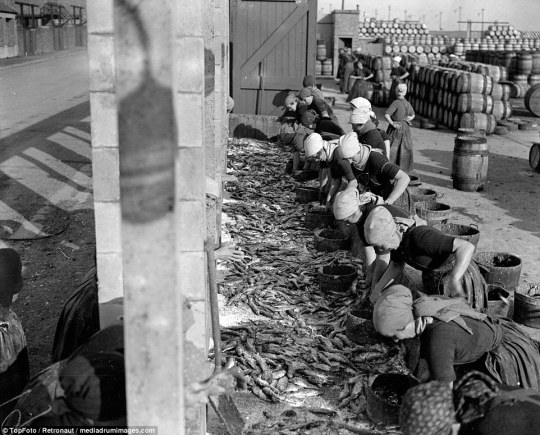

Some worked 15h days, and though they were skilled with the knives, cutting hands while gutting fish was common. Because of the danger, they would often wrap their fingers in bandages, called "cloots," for at least a small level of protection.


"Herring lasses also enjoyed more financial freedom than some of their contemporary counterparts by earning their own wages, and, by travelling for work for months at a time, they also experienced some social freedoms as well."
ArtUK
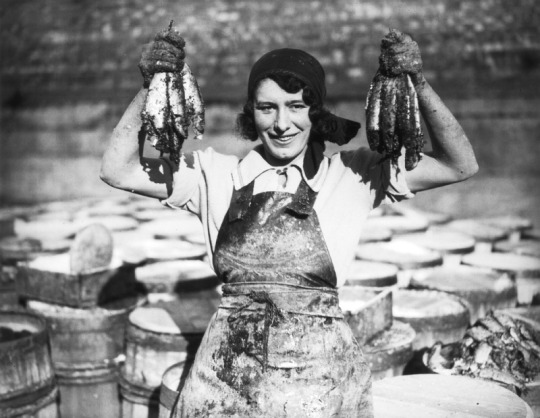
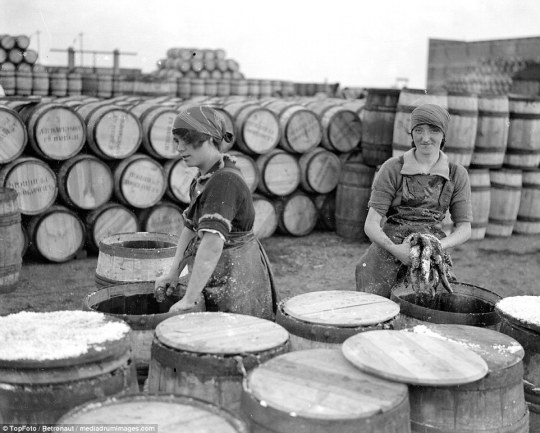
The photographs are from this link. It links to a news article, because the website attributed to the the image is now expired/gone.
#herring girls#herringgirls#herringlasses#herring lasses#women#historical#scotland#scottish#england#english#history
3 notes
·
View notes
Text

"Suddenly the branches twined round her and turned into two arms"
Illustration (1917) by Arthur Rackham for “The Old Woman in the Wood” (1815) by the Brothers Grimm
4 notes
·
View notes
Text
Scottish Folklore Creature: Lavellan

The Lavellan is sometimes described as a Scottish folkloric creature, while other times is said just to be another name for a water shrew.
“What then is the Lavellan of Caithness? Should it be considered as the water Shrew ?”—(Wernerian Society’s Memoirs, vol. ii. p. 1.) Certainly we think so, and that the species has belonged to Caithness since Pennant’s time. Others, however, assign the name to a lizard.”
📖 “A Vertebrate Fauna of Sutherland, Caithness, and West Cromarty” by Harvie-Brown, J. A. and Buckley, T. E. (1887)
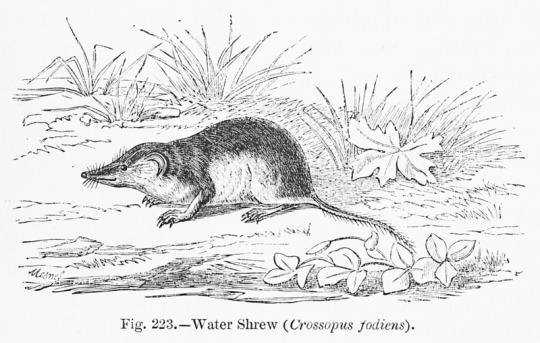
However, unlike a water shrew, the Lavellan is said to be a venomous giant water rat which is capable of making cattle sick, even from great distances away.
“The country people have a notion that it is noxious to cattle; they preserve the skin, and, as a cure for their sick beasts, give them the water in which it has been dipped.”
📖 “Superstitions of the Highlands & Islands of Scotland” by John Gregorson Campbell (1900)
So the debate remains on if the Lavellan is a true folkloric creature, or simply an unfortunate animal that had folklore put upon it as a way to explain sickening cattle.
It is also mentioned by Rob Donn, the Sutherland bard, in his satirical song on “Mac Rorie’s Breeches”: “Let him not go away from the houses, to moss or wood, lest the Lavellan come and smite him.”
📖 “Superstitions of the Highlands & Islands of Scotland” by John Gregorson Campbell (1900)
#scottish folklore#scottishfolklore#folklore#lavellan#scottish#scottish mythology#scottish myths#mythical creatures#mythological
12 notes
·
View notes
Text
Random History: Seahenge

Seahenge is an ancient site in the county of Norfolk(England) which has timber rings that had been hulled in using honeysuckle ropes. Several beams encircled a tree, which had been made to stand upside down- with the roots pointing upwards.

Over time, Seahenge was buried by nature, and wasn't officially rediscovered until 1998. After announcing the discovery to media sources, the location boomed in popularity.
In the pursuit of understanding the sites age, a controversial decision was made to cut into the central oak, revealing Sea Henge to be from the year 2049.
Worried the elements would decay the timber, The English Heritage announced plans for it's excavation and were encouraged to do so by those worried that the traffic of people was disturbing wildlife.
Local communities – alongside pagan groups and a tree activist named Buster Nolan, – quickly united in a bid to save Seahenge. They disrupted the workers and staged sit-ins. However, despite their efforts, the excavation proceeded, with the last piece unearthed amidst fervent opposition.
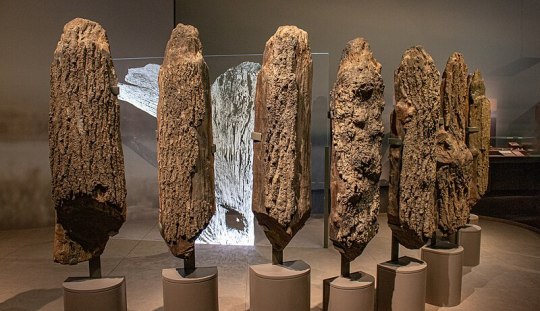
In a twist of fate, another site was later found nearby, but this one instead had two logs laid horizontally in the center, and the ring had a larger diameter of 40ft. It was built in the same year as Seahenge, and remains in place to this day.

22 notes
·
View notes
Photo
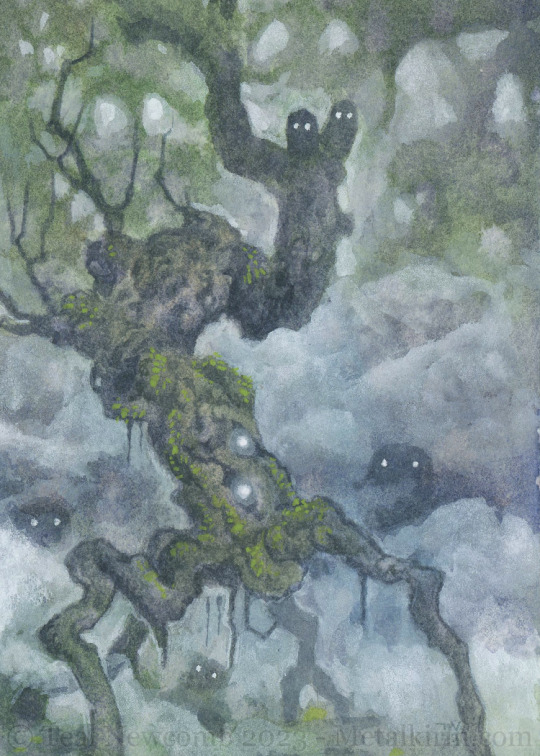
Faerie Forest - Walking Tree
2.5"x3.5" ACEO format. Watercolor, acryla gouache, white gel pen. Original available
Hopefully a study for a larger painting of one of these guys
664 notes
·
View notes
Text
Folklore of Scotland Map🧭👻
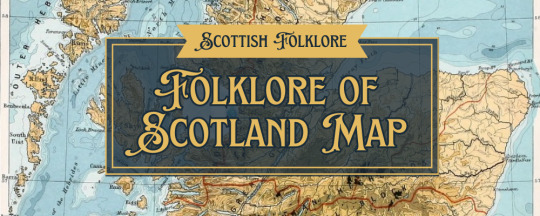
Do you have an interest in folklore and are traveling Scotland? If so, I have been building a map for you to use!
From spooky stories (like a water-horse shapeshifted into an old woman who kills a girl), to quirky ones (like a well where you toss cheese for the fairies), I am adding it all. All the locations will also link to posts with more information.
I hope it helps!
I will continuously add to it over time.
Note: I haven't tested it on mobile
217 notes
·
View notes
Text
Piece of History: ⛏️Pit Brow Lasses

Pit brow workers at Wigan Junction Colliery near Wigan, Lancashire, 1900. Their trousers are barely visible below their long skirts


Woman bearers of coal.
"A Commission was set up in 1840 and called The Children's Employment Commission. During the course of the investigation it was extended to include women. The legislation was passed in 1842 and called The Mines and Collieries Act. It stipulated that boys under 10 and ALL FEMALES - so girls AND women - be banned from working below ground.
It stated that within three months, all females who were under 18 years of age had to cease underground working. It would be several years before this became a reality as some women wanted to continue to work underground.
However, the 1842 Act did not forbid girls and women working on the surface within the colliery, and it was these people who came to be known as Pit Brow Lasses."
Wigan Local History

A group of female pit brow workers.
13 notes
·
View notes
